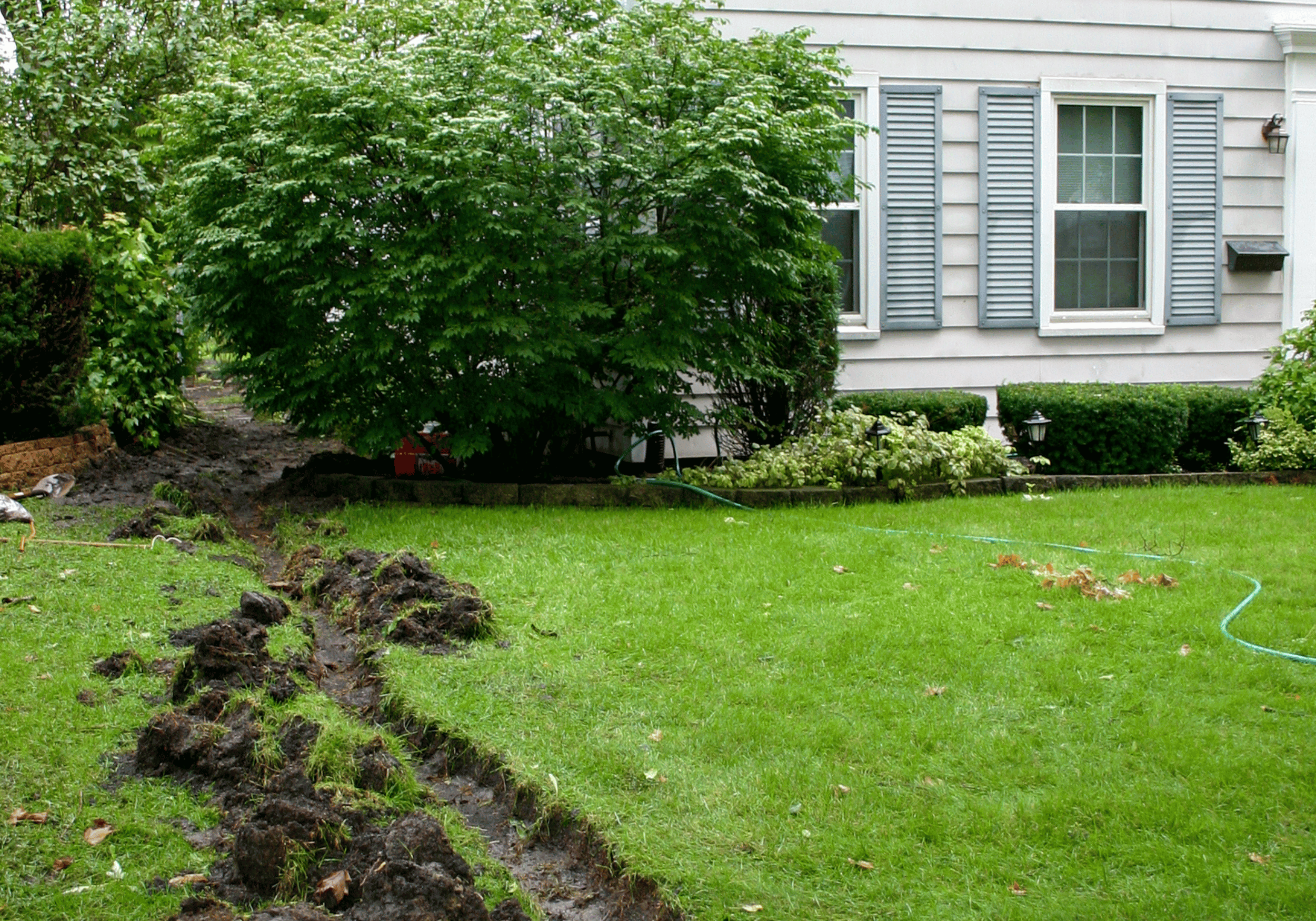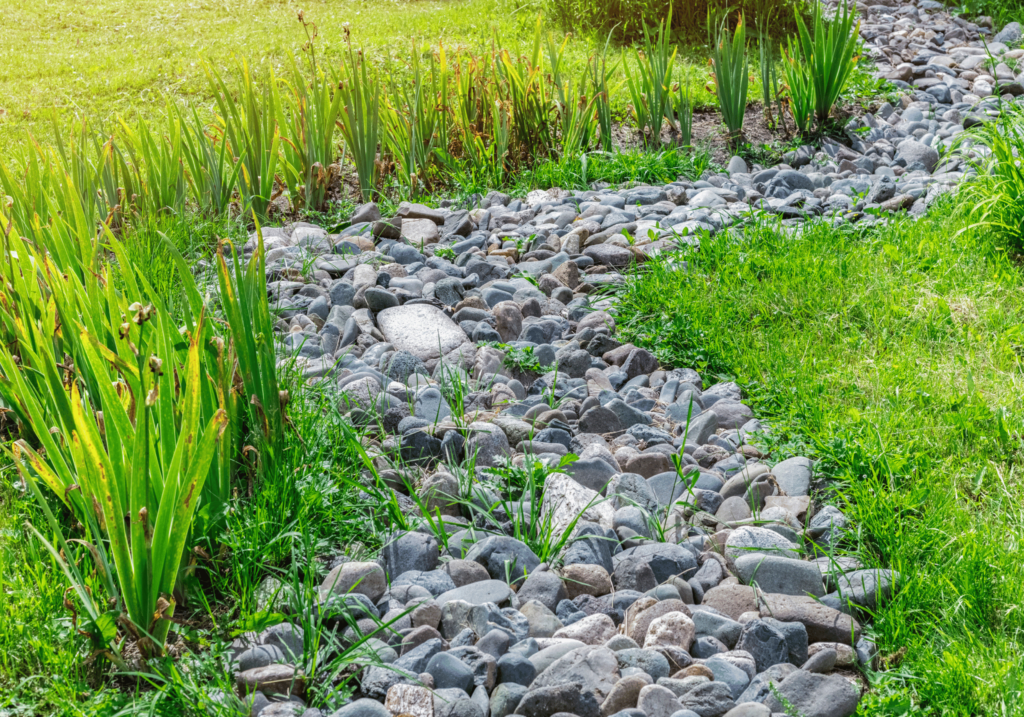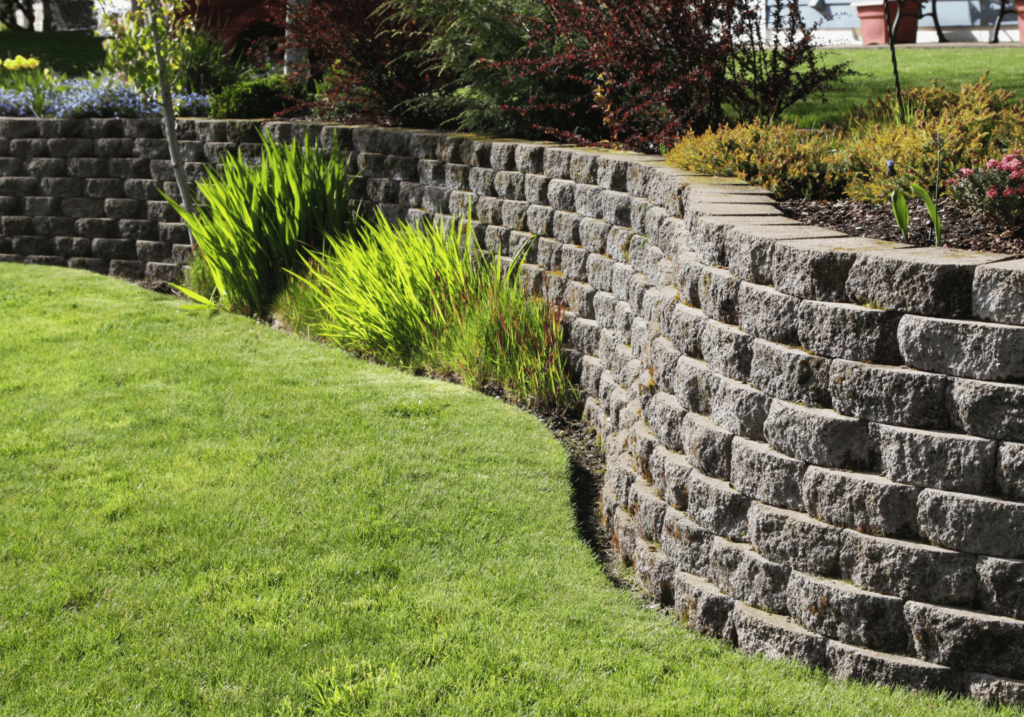Learn More About French Drains, Dry Creek Beds and Retaining Walls
Whether due to erosion or dramatic weather patterns, standing water and flooding are challenges often faced by homeowners. The good news is, we have some solutions! Some of these projects can be done over the weekend but others may require a professional.

Install a French drain.
A French drain is an effective way to reduce standing water on your property. French drains are comprised of filter fabric, slotted pipes and gravel.
To create a French drain:

A low-maintenance form of hardscaping, a dry creek bed is a shallow channel that is lined with landscape fabric and filled with varying sizes of stone and gravel. Also called an arroyo, it is designed to channel water away from low-lying areas in your yard and help prevent flooding.
To create a dry creek bed:

A retaining wall can help decrease erosion and keep soil in place during heavy rain or flooding. It can divert water from your home, eliminating damage caused by freeze and thaw cycles that may occur during winter months. Moreover, retaining walls can add visual interest and provide more functional space in your yard.
Before beginning your retaining wall project, talk to local garden and landscape experts. An expert DIY project, larger retaining walls need to hold their shape while supporting the pressure of the land behind it. With every additional foot of height, the pressure of the soil increases substantially. A shorter wall is an easier DIY project.
If a retaining wall isn’t built properly, it can break down. The keys to a well-built wall include 1) structure 2) materials and 3) drainage.
To help you decide on the best course of action, consider:
There are many ways to improve the landscape drainage and flood prevention. Which one you select will depend on yard conditions, local and neighborhood building codes and regulations, location of utility lines and more.
If you are not certain, we recommend hiring a reputable landscape architect.
Remember, always call 811 before you dig. https://call811.com.